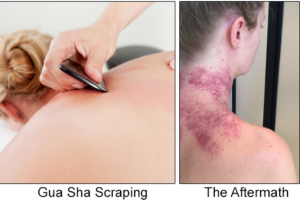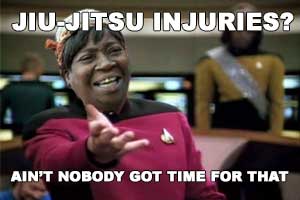One of the biggest challenges to training in Brazilian Jiu-Jitsu when you are over 40 is managing overuse injuries, a challenge becomes greater with each decade over 40. Common sense says learn to not overdo it. That’s easier said than done, especially when soft tissue injuries from training over the years have accumulated. Then there is the fact that we learn our limits by exceeding them, and that the sad fact that the limits recede as we age.
Most people don’t know that soft tissue injuries don’t heal the way that bone injuries heal. Bone tissue heals with the mineral components of bone that results in a repair that is as strong, if not stronger than the bone before injury. Ligaments, tendons, and muscles heal with scar tissue that primarily consists of collagen and elastin. The initial repair process creates a “patch” of random scar tissue fibers which are not in alignment with the soft tissue fibers. This is why scar tissue is never as strong as the tissue it replaces. The result is loss of strength, power, and flexibility, as well as a propensity for re-injury. Scar tissue also has a tendency to contract and deform surrounding tissue, further compounding the challenges. Regaining the maximum strength, power, and flexibility requires aligning and integrating the scar tissue with the uninjured soft tissue fibers.
This morning I set my alarm 30 minutes earlier to make time to stretch, foam roller, tennis ball, and scrape scar tissue to reduce pain and improve range of motion. Last week an MMA class stressed an old injury to the teres, supraspinatus, and bicep tendons and the coracoacromial ligament from a vicious arm bar. The overuse was compounded by and lifting to help others drill the defense for being lifted in a bear hug that stressed old psoas and piriformis injuries from Judo and knee bars compounded by American Sitting Disease (I sit all day).
Anyone who trains in Jiu-Jitsu should incorporate yoga to improve flexibility, even when you are not recovering from a soft tissue injury. Foam rollers and tennis balls can deliver better myofascial release than some massage therapists. Myofascial release is applying sustained pressure to injured or tight myofascial connective tissue that restricts motion and causes pain. Regularly using a foam roller for myofascial release, opening up the spine’s vertebrae, and getting better stretches eliminated the need for visits to a chiropractor. Rolling on tennis ball focuses the pressure for a myofascial release deeper than most people’s hands can perform.
 An exceptional massage therapist who retired to acupuncture (tears) introduced me to scraping, or gua sha. Gua sha, which is scraping the skin and underlying scar tissue, is a traditional East Asian medicine technique. It is not a pleasant experience, and can be quite painful. The bruising is a testament. It’s difficult to exert as much pressure (pain) on yourself as someone else can, but practice and deep breathing helps improve pain tolerance over time.
An exceptional massage therapist who retired to acupuncture (tears) introduced me to scraping, or gua sha. Gua sha, which is scraping the skin and underlying scar tissue, is a traditional East Asian medicine technique. It is not a pleasant experience, and can be quite painful. The bruising is a testament. It’s difficult to exert as much pressure (pain) on yourself as someone else can, but practice and deep breathing helps improve pain tolerance over time.
You might ask if there’s such a heavy price to pay for soft tissue injuries, why do you train? In my experience, benefits include not weighing 900 pounds, maintaining the muscle mass as I age that is critical to overall health, accumulating an array of techniques with which I can maim and kill that I can exercise if I ever need to defend myself or someone else who is defenseless, acquiring some medical practitioner level knowledge of human anatomy, becoming a respectably good physical therapist, the privilege of serving as a positive, strong, and capable female role model to younger women, and on a good day, pinning my opponent’s head to the mat and giving him a noogie. And there you have it. That’s my why.
